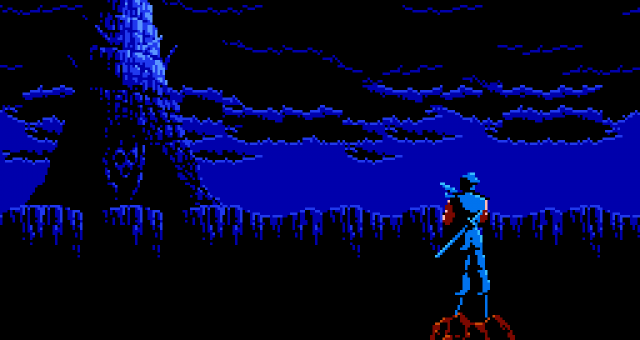
Run, jump, repeat; it never gets old.
Well, for a lot of folks it doesn’t, but being totally honest, platformers would never have survived if developers didn’t take risks with the genre over the years. While it might not seem like platformers are capable of much variety, there have actually been quite a few that have gone in wildly creative directions. In the interest of spreading the love a little, I’m going to refrain from talking about Super Mario Bros. here; it’s the foundation from which all of these other titles spring, so to speak. I’m also going to be focusing on platformers of the 2D variety, this time out. With that in mind… to the games!
Metroid
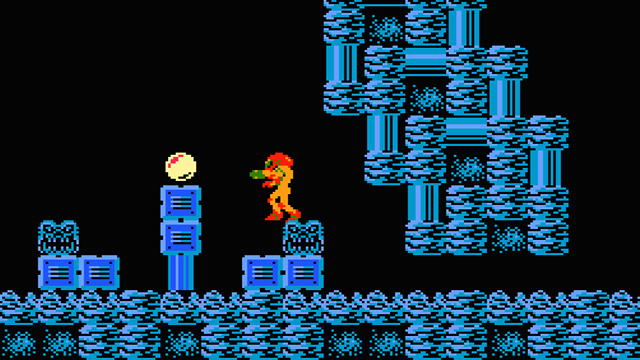
Released: NES, 1987
Left to right was the bread and butter of platformer games; the player headed east, some enemies were smooshed or blasted along the way, and eventually the goal was reached. Yoshio Sakamoto and his fellow developers at Nintendo took exception to such a limited scenario, believing that there was plenty of room for variation within the genre. Thus it was decided that along with left and right, players could also navigate up and down the intricate labyrinth cave system of their new game Metroid‘s planet Zebes. From the outset, players were cast as the enigmatic Samus, clad in full armor and plunked into the dark depths with zero direction regarding where to go. Left to their own devices, players had to figure out what to do to proceed.
It was utterly ingenious game design. Moving ever-reliably right resulted in an eventual dead end. Players, perplexed, went back the other way and discovered that what was always the wrong way to go was instead the first true stop on their journey. The Morph Ball, Samus’s starter power-up, allowed her to fit into small tunnels, but players had to experiment to learn the technique in order to escape the device’s hiding place. The entire game challenged players to think outside the box, to grapple with new tools and how best to utilize them, and just to be a little feisty, turned conventions upside down and revealed at the end that Samus was a woman. Metroid was one heck of a platformer.
Mega Man
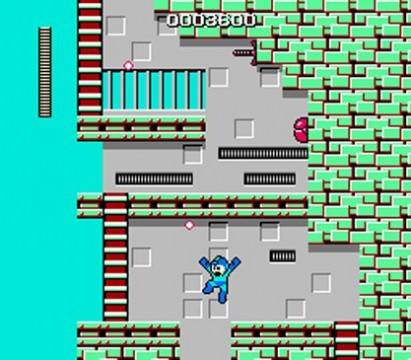
Released: NES, 1987
Linearity was quite common in video games in the late eighties, typically sending players on grueling treks with a single, set course to follow. Mega Man wasn’t like that. Young designer Keiji Inafune and his team at Capcom instead opted to allow players to choose from one of six stages, each containing a themed boss called a Robot Master to defeat. As each boss was taken down, players would return to the level selection screen to pick another to tackle. It was utterly refreshing to have a say in game progression, and fans responded in kind.
Freedom of selection alone was a thrill to players, but Capcom sweetened the deal further by allowing Mega Man to appropriate the weapon of each fallen Robot Master. If players went stage by stage in the correct order, each of the weapons would give them an advantage over a particular remaining boss. Mega Man‘s tight, shooter gameplay was a joy, but the addition of those elements of strategy and freedom were key to its success. The first game wasn’t a smash hit, but its sequel, Mega Man 2, propelled the series to new heights. However, there’s no denying Mega Man‘s role in cementing the series as a unique force in platforming.
Ninja Gaiden
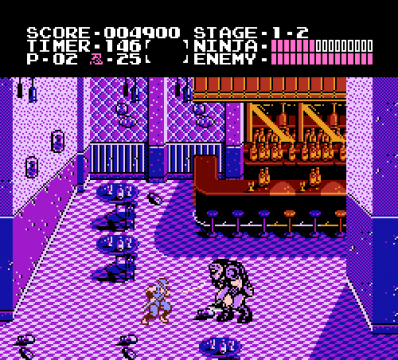
Released: NES, 1989
Developer Taito’s Double Dragon, an arcade brawler, had been doing crazy-good numbers after it debuted. Tecmo, a former cleaning equipment peddler and pachinko machine maker, had recently scored a string of successes after venturing out to make its own, original video game titles, and was keen to challenge Taito’s new release. Team Strong, under the lead of Hideo Yoshizawa (listed in the credits as simply Sakurazaki), set to work to do just that and created its own brawler called Ninja Gaiden. It became a hit, and as was common at the time, was subsequently slated for an NES port. Yoshizawa helmed what would become Ninja Gaiden on NES, but not without first making some serious and groundbreaking changes.
Yoshizawa basically tossed everything about the arcade game out of the window. Protagonist Ryu Hyabusa remained, but Ninja Gaiden was transformed into an action-platformer. Though infamous for its tenacious difficulty, what really differentiated Ninja Gaiden was its robust narrative. Told through little more than comic book panels with captions at the bottom, players of the time were nonetheless floored at those initial attempts at modern day cinema scenes. Ninja Gaiden had a story to tell, and it did so with excellently rendered art and an interesting (if somewhat perplexing) plot. No platformer had ever been as ambitious from a storytelling standpoint, and it paved the way for more unique narrative techniques in the future.
Super Mario World 2: Yoshi’s Island
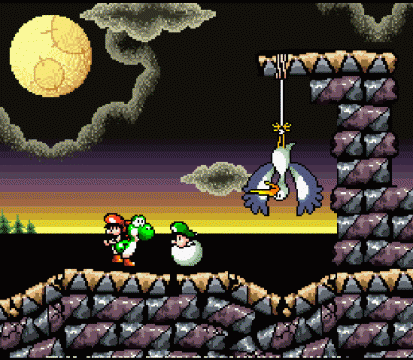
Released: SNES, 1995
It was really pretty disingenuous of Nintendo to title the game Super Mario World 2: Yoshi’s Island. Sure, the title had some thematic similarities to Super Mario World, the most obvious of which being the lovable dino himself, but otherwise, Yoshi’s Island played completely differently than its predecessor. A little digging reveals that Yoshi’s Island was the game’s actual title from when it was released in Japan, and that the Super Mario World moniker was tacked on to keep things familiar for Westerners (yeah, we’re always being doubted). Nintendo could have called it Green Dino Jumpfest and it still would be one of the most unique platformers the company has ever created.
Yoshi remained a transporter in his first solo outing, but as opposed to being a glorified power-up, he was instead the central character of the game. With the exception of his versatile tongue, Yoshi’s moves were totally overhauled for Yoshi’s Island, as players were introduced to his now iconic flutter jump and egg shooting abilities. The mechanics of eating enemies to make eggs (and the different varieties of eggs) was wholly innovative, and the wealth of puzzles and combat scenarios it afforded were brilliant. Also, as annoying as baby Mario’s cries could be, the idea of removing a life or energy bar in place of a timer to retrieve the howling infant was yet another bit of unique game design that Nintendo incorporated. Yoshi’s Island was a platformer that took risks, ones that paid off hugely.
Wario Land II
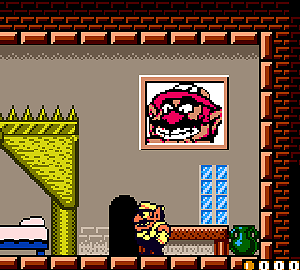
Released: Game Boy, 1998 | Game Boy Color, 1999
If there’s one absolute certainty in life, it’s that life inevitably ends. This same truth was evident in platformers as well, until Wario Land II arrived. Wario Land: Super Mario Land 3 was already a marked departure for Nintendo, as it replaced the lovable Mario with the antihero Wario. Still, the game’s darker tone and selfish protagonist notwithstanding, Wario Land remained a relatively traditional platformer when all was said and done. With Wario Land II, however, Nintendo upped the ante by turning Wario immortal.
With no lives to worry about depleting, players were encouraged to experiment with Wario’s surroundings in order to proceed. This included inquisitive poking at seemingly-normal things like enemies, which were much more than they seemed; besides being antagonists, foes (and hazards) could metamorphose Wario into a variety of different forms. The results were simultaneously hilarious and brilliant, as sometimes progression was directly dependent on Wario turning into something else. Whether it was setting his enormous backside ablaze to generate speed, or getting scrunched into a bubble to waft upwards, Wario Land II was a platformer stuffed with smart ideas and gameplay.
Kirby Mass Attack
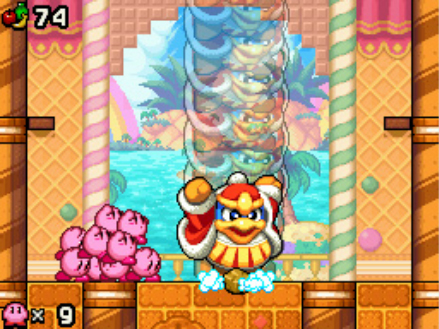
Released: Nintendo DS, 2011
What’s better than one Kirby? Try ten. Kirby was no stranger to DS when Kirby Mass Attack arrived, but developer HAL saved one of its best ideas yet for the character’s finale on the handheld. Kirby Canvas Curse was an excellent game in its own right, but it was also intended to serve the dual purpose of helping to legitimatize the use of a touch screen for video games. Mass Attack came at a time when Nintendo was no longer under pressure to validate its hardware, which left HAL free to experiment with a little more abandon in Mass Attack. Players used the touch screen to guide Kirby across the game’s 2D planes and platforms, which itself was interesting, but made even more so when it was revealed that up to ten of the pink puffball could be controlled at once!
Able to split into multiple copies, players used stylus strokes to send the party of Kirbys to clobber enemies, overcome obstacles, and solve puzzles. More ambitious than Canvas Curse, the variety of moves Kirby was capable of in Mass Attack was shocking, especially given that it was a touch control-only platformer. Though it was a bit sad to see the character’s signature copy abilities absent, the gameplay of Mass Attack was still incredibly innovative. Kirby games are always home to gameplay experimentation, and Mass Attack stands tall as one of HAL’s most unique takes yet on the platforming genre.
Klonoa: Door to Phantomile
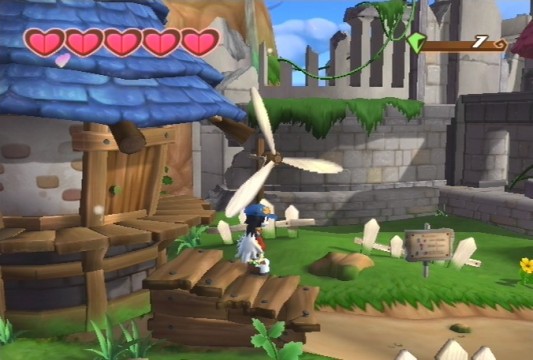
Released: Wii, 2009
I’m cheating a bit here, as Klonoa: Door to Phantomile on Wii was a remake of the classic PlayStation title of the same name. My intentions are pure, though, as the game was a very fascinating step for platformers as a whole. Developer Hideo Yoshizawa (yes, the same man from earlier on our list!) had originally been asked by his bosses at Namco to create an adventure game using a licensed character. Much like how Nintendo’s Donkey Kong was initially intended to be a Popeye game, the unknown licensed character was dropped from Namco’s project, which freed Yoshizawa to design his own characters and scenario for the title. In the wake of Super Mario 64, Yoshizawa had grown weary of the endless 3D platformers that were glutting the market. He found the gameplay confusing, and wanted to create a platformer that merged 3D and 2D gameplay into one. That game would go on to become Klonoa.
Klonoa was a 2D platformer in a 3D-rendered game world. Functionally, the game played like it was on a 2D plane, but to switch things up, Yoshizawa and his team designed it so that the titular Klonoa could wrap around pathways and move into the background, creating the sensation that the game world was more three-dimensional than it actually was. It was a win for 2D platforming, as it proved that the genre was still more than viable, and it provided a happy medium between old and new. The Wii remake of Klonoa maintained everything that made the original special, while augmenting the visuals and freshening the title for a new audience. Combined with Klonoa’s engaging snag-and-toss mechanic, Klonoa was a very inventive platformer.
What platformers do you think brought something new to the genre? Sound off in the comments!




 ShareThis
ShareThis






